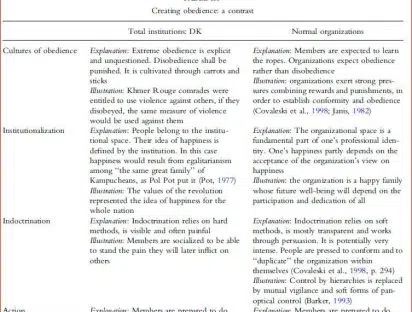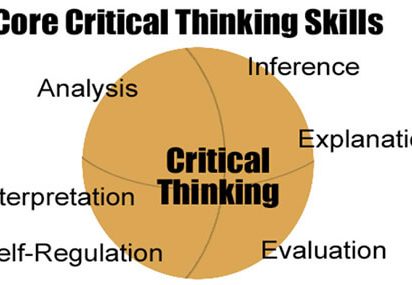
1. Rationality or irrationality
We concluded the previous article by observing that the term “sore loser,” which was used in the recent U.S. presidential election, inappropriately refers to the context of play. It is rather a manner of speaking, a banal formula, and even, especially in the case in question, an easy provocation. But whatever its linguistic status, it remains intelligible. We understand why it has been used. It is thanks to this intelligibility that we can legitimately ask ourselves whether a sore loser can be considered a responsible leader.
It goes without saying that a sore loser is not only a loser – “the person who is defeated in a confrontation, an ordeal, a competition, a game” (1). He may not even be a loser any more. Sore losers do not accept the result of the competition in which they took part and, an essential trait, they make it public. But while the loser is still within the framework of the competition, the sore loser has left it. He or she has himself or herself created a new situation.
The sore loser’s conduct can be seen in different ways. It can be the result of a calculation, of an intention to publicly deny the result in order to make a profit in the future. This calculation may satisfy conditions of rationality, although the conduct of the person concerned may appear irrational. Donald Davidson offered an illustration of this type of case:
“Many might hold that it is irrational, given the dangers, discomforts, and meagre rewards to be expected on success, for any person to attempt to climb Mt. Everest without oxygen (or even with it). But there is no puzzle in explaining the attempt if it is undertaken by someone who has assembled all the facts he can, given full consideration to all his desires, ambitions and attitudes, and has acted in the light of his knowledge and values.” (2)
But Davidson also considered situations of irrationality, which consist in “the failure, within a single person, of coherence or consistency in the pattern of beliefs, attitudes, emotions, intentions and actions.” He cited four types of irrationality in support of his argument, one of which being applicable to the situation of a sore loser: denying evidence, i.e. “believing something that one holds to be discredited by the weight of the evidence” (3).
Psychological considerations can also be put forward to explain the sore loser’s behaviour. The theory of causal attribution is perhaps the first candidate, specifically the idea that “persons attribute their success to internal factors and attribute their failures to external factors,” in the words of William Bukowski and DeWayne Moore (4). Citing research on the attribution of success or failure in sport to dispositional factors (related to the subject’s personal abilities) or situational factors (related to external factors beyond the subject’s control), the authors observe that baseball players “viewed the failure as ‘determined by environmental stimuli that do not take anything away from the individual’s capabilities,’ whereas success was viewed as due ‘to the team’s own natural conditions and capabilities’” (5).
2. Responsible leadership
Let us now turn to the notion of responsible leadership. It literally brings together the concepts of leadership and corporate social responsibility (CSR). However, their respective definitions depend on background conceptions.
Leadership is defined in a variety of ways, although, according to Gary Yukl, “most definitions […] reflect the assumption that it involves a process whereby intentional influence is exerted over other people to guide, structure, and facilitate activities and relationships in a group or organization” (6).
CSR, spontaneously considered as the implementation of sustainable development by companies, is also subject to different perspectives. For example, Thomas Maak and Nicola Pless’ definition – responsible leadership is “the art of building and sustaining morally sound relationships with all relevant stakeholders of an organization” (7) – refers to a “broad” conception of CSR, according to which companies should not only satisfy the interests of their shareholders (an imperative corresponding to the “narrow” conception), but also those of their stakeholders, which include society and the environment.
Donald Siegel, on the other hand, proposes an economic and strategic conception (a form of narrow conception of CSR) in the context of a reflection on the activities of environmental management. He argues that managers of private companies “should not engage in such activities for ‘moral’ reasons or in response to societal pressure alone, but rather in response to a legitimate demand for green management practices from groups (e.g., consumers) that can directly benefit the firm” (8).
However, the broad version is favoured in the literature. It takes up the theses of stakeholder theory, in particular the concern for their interests and the imperative search for a balance in decisions taken in situations involving different stakeholders. They are found in this definition:
“Responsible leadership involves actions and decisions on the part of people in leadership positions that should balance the needs and concerns of a variety of stakeholder entities. The entities can include employees, shareholders, customers, the environment (and groups that monitor it), and the greater community in which a firm exists. The idea is that leaders need to be accountable to all of these entities in an equal manner.” (9)
The following definition clarifies the role of coordinator played by this type of leader:
“Responsible leaders use their influence to bring all affected parties (not only their employees) together to try to arrive at consensual solutions by weighing and balancing the different interests.” (10)
3. Attractiveness of the roles assumed by a leader
We have just mentioned the concept of role. Its use is natural when describing a function. But a leader fulfils several functions. James MacGregor Burns, a well-known author on leadership, used it to describe the interaction between leaders and followers, i.e. subordinates, stating that “leaders must comprehend many roles and followers fewer.” He added that, “standing at the points of contact among latent conflict groups, they can take various roles, sometimes acting directly for their followers, sometimes bargaining with others, sometimes overriding, certain motives of followers and summoning others into play.” (11)
The interaction between leaders and followers, which is a type of social interaction, refers to the definition of a role. The reference is logical. Véréna Aebischer and Dominique Oberlé thus recall the “interactive dimension” of a role, the fact that it “is part of a relationship” and that it “involves other roles which are complementary to it” (12).
Lists of the roles fulfilled by a leader take different forms. For example, Tom Peters and Robert Waterman described the “transformational leader” (promoted in particular by Burns) as being “concerned with the tricks of the pedagogue, the mentor, the linguist – the more successfully to become the value shaper, the exemplar, the maker of meanings,” that he or she is “the true artist, the true pathfinder” (13).
It is true that some lists mix functions and personal qualities. This is the case of the one proposed by John Fraedrich and his colleagues (14). It lists seven types of conduct – “habits,” as the authors put it – that a true ethical leader should demonstrate: “strong personal character, passion to do right, proactivity, considering stakeholders’ interests, being role models for the organization’s values, transparency and active involvement in organizational decision making, being competent managers who take a holistic view of the firm’s ethical culture” (15).
A final comment. Fraedrich and his colleagues observe that “lapses in ethical leadership can occur even in people who possess strong ethical character.” They think of the cases, which they believe are numerous, in which a leader known for his or her personal morality does not apply the precepts of ethical leadership in his or her own organisation. This brings to mind Pless and Maak’s observation that responsible leadership is less about individual characteristics, such as those that define a “great man” or charismatic leader, and more about leaders’ relationships with their stakeholders (17). These relationships involve reciprocal expectations that shape the roles the leader assumes. This will be discussed in our next article.
Alain Anquetil
(1) Source: CNRTL. (2) D. Davidson, « Paradoxes of irrationality », in R. Wollheim & J. Hopkins (dir.), Philosophical essays on Freud, Cambridge University Press 1982. (3) These are “wishful thinking, acting contrary to one’s own best judgment, self-deception, believing something that one holds to be discredited by the weight of the evidence.” (4) W. M. Bukowski & D. Moore, “‘Winners’ and losers’ attributions for success and failure in a series of athletic events,” Journal of Sport and Exercise Psychology, 2(3), 1980, pp. 195-210. In this passage, Willem Doise and his colleagues summarise the “central idea” of the theory: “Events, behaviours, result or are due to forces, to determinisms, either from the people involved or from the environment. In the first case, we speak of internal causality or dispositional factors; in the second case, we speak of external causality or situational factors” (W. Doise, J.-C. Deschamps & G. Mugny, Psychologie sociale expérimentale, Paris, Armand Colin, 1991). (5) The article quoted is by Seppo Iso-Ahola, “Immediate attributional effects of success and failure in the field: Testing some laboratory hypotheses,” European Journal of Social Psychology, 7, 1977, pp. 275-296. (6) G. Yukl, Leadership in organizations, 8th ed., Harlow, Pearson, 2012. Søren Jagd points out that while management is concerned with planning, control and other tasks related to the functioning of an organisation, leadership contributes to the dynamics of collective action. In Jagd’s words, it aims at “establishing direction, aligning, motivating, and inspiring people” (S. Jagd, « Leadership », in C. Wankel (ed.), Encyclopedia of business in today’s world, SAGE Publications, 2009). (7) T. Maak & N. M. Pless, “Introduction: The quest for responsible leadership in business,” in T. Maak & N. M. Pless (eds.), The responsible leadership, Routledge, 2006. (8) D. S. Siegel, “Green management matters only if it yields more green: An economic/strategic perspective,” Academy of Management Perspectives, 23(3), 2009, pp. 5-16. (9) D. A. Waldman, “Moving forward with the concept of responsible leadership: Three caveats to guide theory and research,” Journal of Business Ethics, 98, 2011, pp. 75-83. (10) C. Voegtlin, “Development of a scale measuring discursive responsible leadership,” Journal of Business Ethics, 98, 2011, pp. 57-73. (11) J. M. Burns, Leadership, New York, Harper Row, 1978. (12) V. Aebischer & D. Oberlé, Le groupe en psychologie sociale, 5th ed., Paris, Dunod, 2016. (13) T. J. Peters & R. H. Waterman, In search of excellence, New York, Harper & Row, 1982. (14) J. Fraedrich, O. C. Ferrell & L. Ferrell, Ethical decision making for business, 8th ed., South-Western, Cengage Learning, 2011. These authors refer to ethical leadership, not responsible leadership. The two concepts have been differentiated in recent literature, in particular to take into account the increasing demands of corporate social responsibility. However, the definitions proposed often overlap. (15) The tasks of the ethical leader are described, and they include the consideration of stakeholders’ interests which is promoted by responsible leadership – “active” communication and cooperation with stakeholders, setting up procedures to ensure that their interests are respected, recognising their interdependence, not undertaking activities that infringe their fundamental rights. (16) T. Maak & N. M. Pless, “Responsible leadership: Pathways to the future,” Journal of Business Ethics, 98, 2011, pp. 3-13. […]




